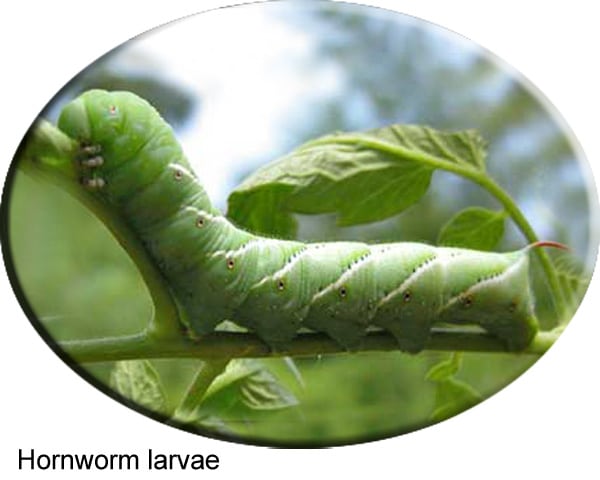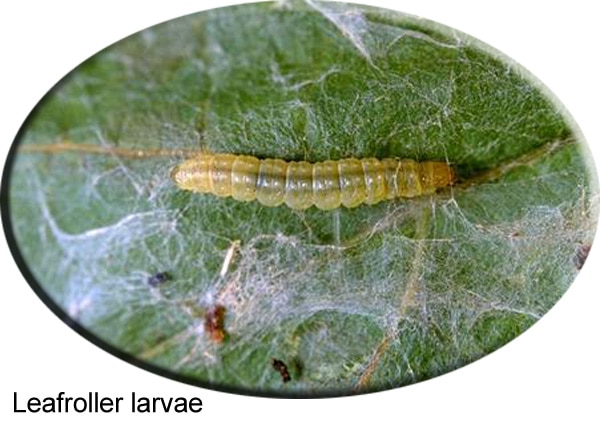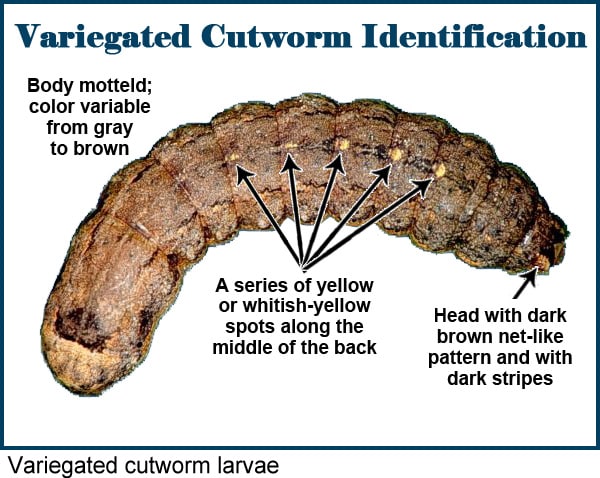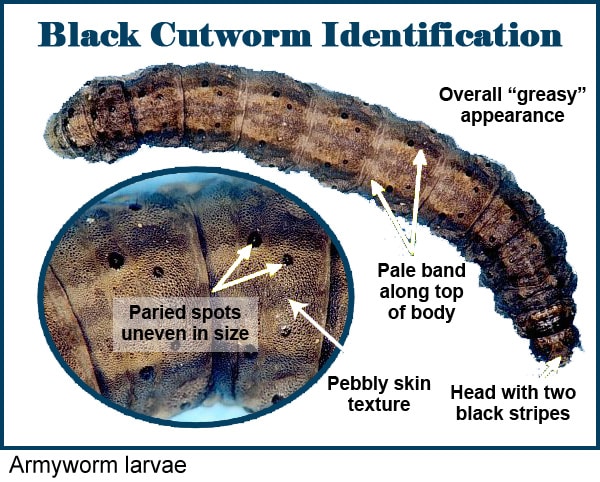A variety of insect larval pests, such as Tomato Hornworms, Beet Armyworms and other cutworms will seek out your pepper plants and munch them into oblivion if you are not diligent with your plant care. “Cutworms” is the name used for the larvae of a number of species of adult moths. Eggs that hatch in the fall can produce larvae capable of overwintering in the soil or a woodpile. They do the most damage early in the gardening season, when they emerge from hibernation. Most are stealthy, and some tend to feed only at night, while hiding in daylight hours. Others feed during dawn, dusk, or during daylight hours. Different species range in color from grey to pink, green and black and can be as long as two inches. They can be solid, spotted or striped. Some curl up when they are not on the move. Some cutworms can chew through plant stems at the base! They can cut off the plant from underneath the soil. Much of the time, entire plants can be destroyed. They can do much damage in a short period of time.
Others, such as the Leafroller, hide in a curled up leafy home that they build for themselves. These pests can also lay their eggs on or near your pepper plants, and both larvae and adults will eat the foliage, stems, and fruit. Moderate damage stunts a plant’s growth, and serious injury can kill it.
Not all insects will respond to the same methods of treatment. You may need to attempt different techniques to keep pests at bay.
You may invite beneficial predators and/or purchase helpful insects to eliminate or control detrimental pest populations. Chickens and ducks feed on many types of insects and find larvae delicious. Ladybugs, wasps and praying mantises eat eggs, larvae and adult pests. The Trichogramma wasp is a tiny parasitic wasp that has a wingspan of 1/50th of an inch. They can efficiently destroy eggs of more than 200 species of Lepidoptera. These moths and butterflies are leaf eaters in their caterpillar stage.
You may spray your plants with Bacillus Thuringiensis (Bt), a bacterial control that prevents and treats pest infestation. Bt kills pests quickly and is safe to use around humans and pets. It is not considered safe for butterflies, as it interferes with digestion in their larval stage, as this is the way it kills the caterpillars eating your peppers, too.
Keep the area around the pepper plants clean and free of weeds and tall grass. Tall grass gives pests a place to hide and breed.
Keep a close eye on your pepper plants as fruits start to appear. Check your fruits for insect holes and feces. Remove and dispose of damaged fruit as soon as you see it.
Plant your peppers away from sugar beets and alfalfa. These two crops serve as host plants for the omnivorous Leafroller, a moth that eats pepper leaves and fruit.
Handpick large caterpillars, such as tomato hornworms and beet armyworms, when you see them. Drop the pests into a bowl of soapy water to dispose of them. Inspect your plants at different times of the day and night. Go out at night with a flashlight and gloves.
Sprinkle used coffee grounds or eggshells around your plants. Circle stems with diatomaceous earth, a natural powder made from ground up fossils that kills insects that walk through it.





